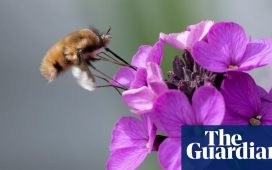If their plumage was gaudy, if they lived deep in tropical jungles, then the family life of wood pigeons would be the subject of a TV documentary. It was dawn in early February, and the cooing outside my window was a sign that breeding, not just feeding, occupied the mind of the resident male wood pigeon. Heavy snowfall soon cooled his ardour, but after the thaw his courtship routine began.
First, wide parabolic flights across the garden, sometimes with wing clapping, like pistol shots. Then, hopping and strutting, pigeon-chested, bowing until his beak touched the roof tiles, pursuing a disdainful consort. Eventually, she too thawed. Once he captured her attention, I could watch his pièce de résistance, performed in the lime tree at the end of the garden.

They nodded to each other several times, from branches about a metre apart. Encouraged, he gripped his perch, leaned forward until facing almost vertically downwards, and fanned his tail feathers as they levelled with her beak, like a gambler laying a winning hand on the card table. A gust of wind nearly blew him off his perch. He managed four performances before she lost interest, but his moves must have worked their magic; next time I saw them, they were side by side, beaks interlocked, sharing regurgitated food.
Today, she is staring down at me from her nest, in the tangled branches of the willow-leaved pear at the centre of the garden. The tree is an avian hub, often full of cacophonous starlings and tree sparrows; maybe their presence provides some early warning against marauding magpies. The rudimentary nest is a flimsy affair, a platform of twigs used (with perfunctory repairs) nine years in succession, often twice annually. I’ve never seen an egg or chick fall out.
The enchanting culmination of this annual cycle will come in May, when the squabs flutter down from the nest, still helpless, still clad in spiky pin feathers, with thin, soft beaks that they push down their mother’s throat to drink regurgitated liquid food. They draw her close with a wing stretched across her back.
It’s one of the most charming spectacles in British natural history.
• Country Diary is on Twitter at @gdncountrydiary






